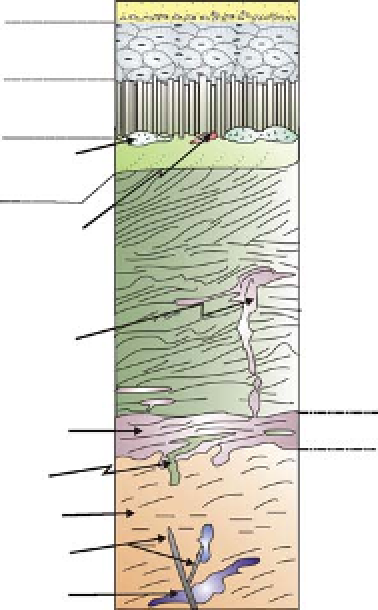Geology Reference
In-Depth Information
Deep-Sea sediments
Basaltic pillow lavas
Sheeted dyke complex
Isotropic gabbro
Foliated gabbro
Plagiogranite
Layered gabbro
Wehrlite
diapir
Seismic moho
Wehrlite
Petrological moho
Gabbro
Ultramafics
Harzburgite
Mafic dykes
Dunite
Figure 8.8
Schematic section through a typical ophiolite sequence (further
details in text).
the field and petrological characteristics that enable them to be recognised. An
ophiolite
is defined as an assemblage of mafic and ultramafic rocks, ideally
with a stratigraphy as in Figure 8.8. Thus a
complete
ophiolite sequence would
provide representative samples of all the layers inferred to comprise oceanic
lithosphere, but most mafic and ultramafic bodies with characteristics of ophio-
lites do not form complete sequences, possibly as a result of disruption during
tectonic emplacement (for example, Figure 8.9). However, once several of the
following characteristics have been found in the field, some confidence may be
placed in the identification of an ophiolite.
First, ophiolite bodies are rarely found alone but tend to occur as intermittent
elongate bodies aligned along a zone of major thrusting/faulting, such as the
Alps and Himalayas. Within each ophiolite body, the rock-types often become
progressively more ultramafic towards the base (remember, though, that the
sequence may be dipping or even inverted due to tectonic emplacement). Ideally,
the base may be seen to rest on a thrust zone which may be identified in the


















